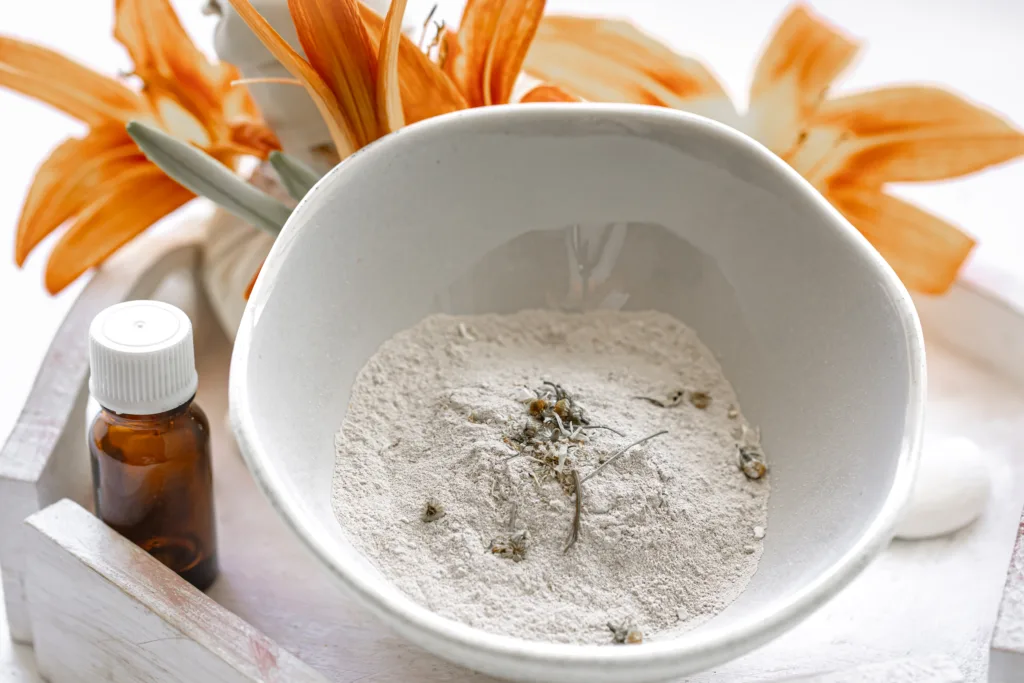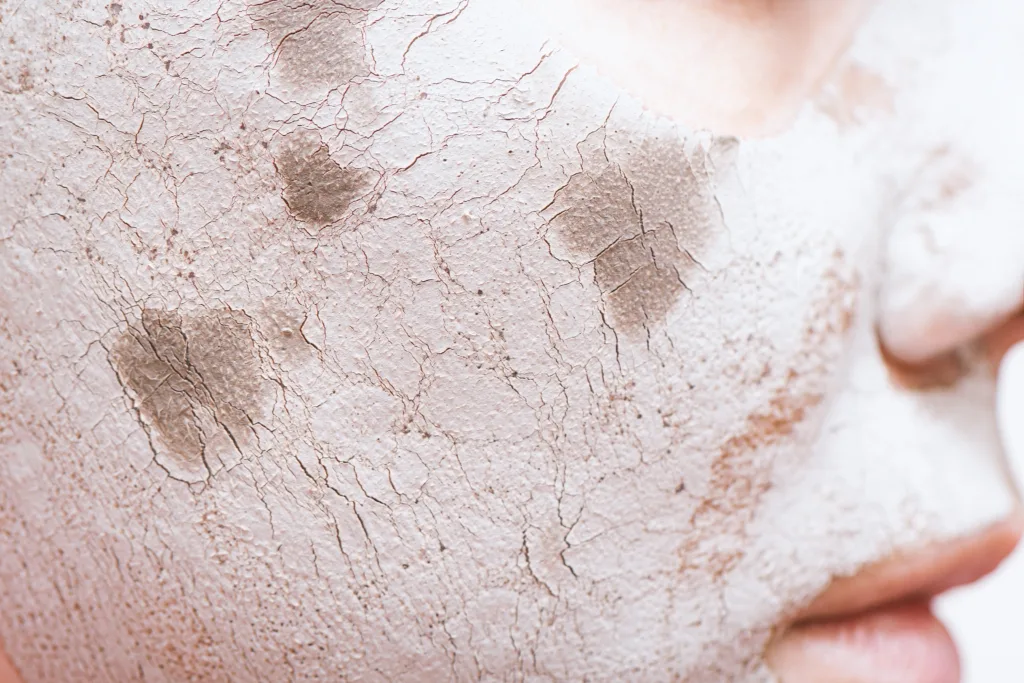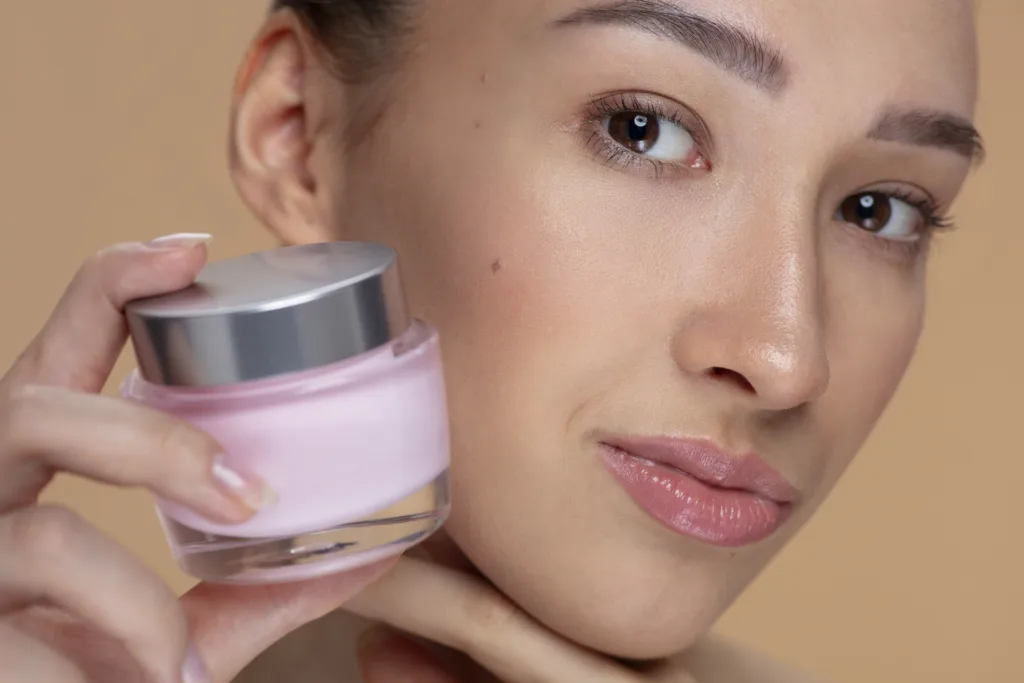This post may contain affiliate links which means we may receive a commission for purchases made through links. Read more on our Privacy Policy.
Are you still on the never-ending quest for the best makeup for acne prone skin? Join the club! I get it – the struggle is real. Each day feels like a journey through a maze of products, hoping to find the one that won’t wreak havoc on our skin.
But fear not! There’s a game-changer in town, and it goes by the name of a mattifying primer. This little miracle promises not just a flawless finish but a solution to our skin concerns. Get ready to tip toe into the realm of makeup as we shine a spotlight on the significance of a mattifying primer so we keep the wrong ones out of the way and make perfect makeup match – especially when dealing with acne prone skin.
Table of Contents
How does Mattifying Primer Work?
Alright, let’s get into the nitty-gritty of things. Have you ever wondered about the wizardry behind the mattifying primer? I know I have! So, prepare for a beauty-science journey! I’m about to break down exactly how mattifying primer works its magic and makes this little wonder a breakthrough for anyone on the quest for the best makeup for acne prone skin.
Absorbing the Excess
- Oil Control: Mattifying primer is like a superhero armed with oil-absorbing powers. It contains ingredients that work tirelessly to soak up excess oils on your skin, leaving you with a fresh, matte finish.
- Pore Refinement: Ever heard of optical diffusers? They’re the secret agents in a mattifying primer that visually minimize the appearance of pores, giving your skin that silky-smooth look.
For more insight, check out our guide on congested skin.
The Silky Smooth Base
Let’s talk about that smooth canvas we all crave before applying our makeup. Here’s how mattifying primer achieves it:
- Texture Smoothing: These primers often contain silicones that act as fillers for fine lines and imperfections, creating a velvety-smooth texture.
- Enhanced Makeup Adhesion: Ever applied foundation only to find it sliding off a few hours later? Mattifying primer fixes that! They provide a grip for your makeup, ensuring it stays in place throughout the day.
Suitability for Different Skin Types

I’ve heard the whispers – “Mattifying primer is only for oily skin, right?” or “Is mattifying primer a one-size-fits-all solution?” Let’s debunk that myth and continue our quest!
Versatility Across Skin Types
So, are mattifying primers suitable for all skin types? The truth is, yes, they can be! While they’re renowned for managing excess oil, they can also offer benefits to other skin types.
- Oily Skin: For those with oily skin, the oil-absorbing prowess of mattifying primers is a godsend. They keep that unwanted shine at bay, providing a matte finish that lasts.
- Combination Skin: If your skin is a mix of oily and dry areas, mattifying primers can balance things out. Apply sparingly on oil-prone zones to maintain equilibrium.
- Sensitive Skin: A mattifying primer works for sensitive skin too because it controls oil gently, has a lightweight and breathable texture, reduces allergen exposure, and contributes to long-lasting makeup without causing irritation.
- Dry Skin: Now, here’s the game-changer. Yes, you heard it right – you can use a mattifying primer with dry skin. The key is to choose a hydrating formula that offers a smooth base without stripping away essential moisture.
Check out more tips on shiny skin in this guide.
Pro Tip: If you have dry skin, consider applying a lightweight moisturizer before using a mattifying primer to strike the perfect balance between hydration and a matte finish.
Addressing Concerns and Misconceptions
Let’s address some common concerns and misconceptions:
- Myth: Mattifying Primers Dry Out the Skin: Not necessarily. Opt for hydrating formulas to maintain moisture levels.
- Misconception: Not for Normal or Dry Skin: Untrue! The right mattifying primer can enhance makeup longevity across various skin types.
- Concern: Will It Emphasize Dry Patches? Choose a primer with moisturizing ingredients to avoid accentuating dry areas.
- Worry: Can I Use It Daily? Absolutely, as long as it suits your skin type. Daily use is fine, but listen to your skin and adjust accordingly.
So, the verdict is in – mattifying primers are versatile and can be a valuable addition to your skincare and makeup routine, regardless of your skin type. But wait, I’m just scratching the surface here! Stay tuned as we dig deeper so you always pick the right one for your skin type!
Controlling Oiliness Throughout the Day

Now, we’re diving into the heart of the matter: Do mattifying primers truly live up to the hype when it comes to controlling oiliness? Spoiler alert – they’re like little magic wands for your skin, and I’m here to spill all the deets.
The Oil Control Chronicles
A. Let’s get straight to the point – do mattifying primers really have what it takes to control oiliness? The answer is a resounding yes! These gems are formulated with ingredients that act as your personal oil police, keeping excess shine under strict surveillance.
- Oil-Absorbing Marvels: The main act – many mattifying primers contain oil-absorbing ingredients like silica, clay, or salicylic acid. These work tirelessly to soak up excess oils, leaving your skin with a fresh, matte finish.
- Pore-Refining Sorcery: Another trick up their sleeves – pore-refining capabilities. Mattifying primers often include optical diffusers that visually minimize the appearance of pores, ensuring a smooth canvas and preventing excess oil from making a grand entrance.
Sustaining the Freshness
Now that we’ve established the oil-control prowess, let’s talk about how mattifying primers maintain that fresh look throughout the day:
- Extended Makeup Longevity: Mattifying primers provide a sturdy base, ensuring your foundation and other makeup adhere well, resisting the urge to slide off your face as the day goes by.
- Say Goodbye to Midday Touch-Ups: Tired of reaching for blotting papers every few hours? Mattifying primers might just be your knight in shining armour. They significantly reduce the need for constant touch-ups, allowing you to enjoy your day without worrying about your makeup melting away.
- Combatting Humidity and Heat: If you live in a hot and humid climate, you know the struggle. Mattifying primers are your secret weapon against the elements. They work wonders in preventing your makeup from succumbing to the challenges of weather, keeping you looking fresh despite the heat.
- Preventing the Dreaded Cakey Look: We’ve all been there – applying more powder in an attempt to combat oiliness, only to end up with a cakey mess. Mattifying primers help strike the right balance, controlling oil without suffocating your skin, ensuring your makeup looks effortlessly natural.
Pro Tips for a Flawless Finish
Ready for some pro tips to maximize the magic of mattifying primers? Here we go:
- Spot Treatment: Use a small amount of mattifying primer as a spot treatment on areas prone to oiliness, such as the T-zone. This targeted approach ensures precision in oil control without overloading your entire face.
- Mix and Match: Customize your makeup routine by mixing a drop of liquid highlighter with your mattifying primer. This concoction adds a subtle glow to your matte finish, giving you that lit-from-within radiance.
- Midday Refresh: Keep a travel-sized mattifying primer in your bag for a quick midday touch-up. Dab it gently on areas where shine tends to peek through for an instant matte revival.
Product Recommendations
Now, let’s talk about some tried-and-true products that have earned their place in the mattifying primer hall of fame:
- Urban Decay All Nighter Face Primer: This gem not only controls oil but also ensures your makeup stays put for an extended period. It’s a game-changer for those long days and nights.
- Fenty Beauty Pro Filt’r Mattifying Primer: Rihanna knows her stuff, and this primer is no exception. It blurs pores, controls oil, and creates a smooth canvas for your makeup masterpiece.
- NYX Professional Makeup Shine Killer Primer: If you’re on a budget but still want a top-notch mattifying primer, NYX has got you covered. Shine killer by name, shine killer by nature.
Preventing Makeup from Looking Cakey

Ah, the dread of a cakey look – it’s the stuff of beauty nightmares. Now, let’s unravel how mattifying primers step up to the plate, ensuring our makeup doesn’t venture into cakey territory.
The Primer’s Role in the Cakey Capers
First things first – how do mattifying primers contribute to a flawless makeup finish, and why are they the unsung heroes in this battle against cakey disasters?
- Smooth Operator: Picture this – your skin is a canvas, and the primer is the artist’s brush, ensuring a smooth and even surface for your makeup masterpiece. Mattifying primers fill in fine lines, blur imperfections, and create a velvety canvas for your makeup to shine (without the cakey drama).
- Balancing Act: Mattifying primers strike the perfect balance between controlling excess oil and maintaining hydration. They create a harmonious environment for makeup application, preventing the dreaded cakey texture caused by uneven product absorption.
Insights into Cakey Prevention
Now, let’s get down to the juicy details – how can we prevent our makeup from looking cakey, especially when navigating face primers?
- Less is More: One of the cardinal rules in makeup – less is more, especially when it comes to product application. Start with a small amount of foundation and build up if needed. A mattifying primer already creates a smooth base, so you won’t need as much product to achieve a flawless finish.
- Blend, Blend, Blend: The magic wand of makeup – blending. Whether you’re using a sponge, brush, or your fingers, ensure that every layer of product seamlessly fuses with your skin. This prevents product buildup and contributes to a natural, non-cakey appearance.
- Choose Wisely: Opt for lightweight, breathable formulations. Mattifying primers with featherlight texture provide the perfect foundation for your makeup without overwhelming your skin.
- Set Strategically: If you’re using powder to set your makeup, do so strategically. Focus on areas prone to oiliness and where makeup tends to settle. Avoid being heavy-handed, as excess powder can lead to a cakey finish.
- Exfoliation is Key: Regular exfoliation is your secret weapon. By sloughing off dead skin cells, you create a smoother canvas for makeup application, reducing the likelihood of product clinging to dry patches
Product Recommendations
Here are some tried-and-true products to accompany your mattifying primer in the quest for a cake-free finish:
- SmashBox Photo Finish Control Mattifying Primer: This gem is a double threat – it mattifies and blurs imperfections, ensuring a flawless canvas for your makeup endeavors.
- Laura Mercier Translucent Loose Setting Powder: A cult favorite, this setting powder is lightweight and finely milled, providing a velvety finish without the dreaded cakey texture.
- Maybelline Fit Me Matte + Poreless Foundation: An affordable yet effective option, this foundation pairs beautifully with mattifying primer, offering a matte finish without compromising on hydration.
Specific Ingredients in Mattifying Primers

Now let’s explore another dimension of matte primers – the secret ingredients that make them the superheroes of the makeup realm. So, lets demystify the ingredient list and understanding how each component plays a vital role in achieving a matte finish while nurturing our skin.
Key Ingredients Unveiled
Let’s shine a spotlight on the stars of the show – the key ingredients that makes mattifying primer more than just a makeup product:
- Silica: The Silky Whisperer – Silica is a mineral often found in mattifying primer. Its magical touch lies in its ability to absorb excess oil, leaving your skin with a velvety, matte finish. For those with acne prone skin, silica is a gentle yet effective ally in controlling shine without clogging pores.
- Hyaluronic Acid: The Hydration Maestro – Wait, isn’t this the ingredient famous for hydration? Absolutely! Hyaluronic acid, when infused in mattifying primers, ensures a delicate balance. While controlling oil, it also hydrates the skin, preventing dryness and flakiness.
- Salicylic Acid: The Blemish Buster – Acne prone skin often grapples with the unwelcome companionship of blemishes. Enter salicylic acid. This powerhouse ingredient not only controls oil but also dives deep into your pores, keeping them clear and minimizing the risk of breakouts.
- Clays (Kaolin, Bentonite): The Earth’s Detoxifiers – Clays are natural wonders known for their detoxifying properties. Kaolin and bentonite clays, commonly found in mattifying primers, absorb excess oil, reduce shine, and leave your skin feeling refreshed.
- Dimethicone: The Smoothing Virtuoso – Ever wondered how makeup glides effortlessly across your skin? Dimethicone is the answer. This silicone-based ingredient creates a smooth, pore-filling base, ensuring your makeup sits flawlessly on your skin’s canvas.
- Niacinamide: The Calming Agent – Adding to the skincare benefits, niacinamide soothes irritated skin and helps control sebum production. It’s a win-win for achieving a matte finish while addressing acne-related concerns.
Pro Tip: Time Your Application: Apply your mattifying primer after your moisturizer has settled into your skin to ensure it creates a smooth base without disturbing your moisturizer.
The Acne Prone Skin Benefits
Now that we’ve identified these powerhouse ingredients, let’s dive into how they specifically benefit those of us with acne prone skin:
- Pore Minimization: Silica and clays work in tandem to visually minimize the appearance of pores. For acne prone skin, this means a smoother canvas that reduces the risk of makeup settling into pores and causing breakouts.
- Oil Control without Stripping: Hyaluronic acid ensures that the oil control isn’t accompanied by dryness. It maintains a hydrated environment, preventing the skin from overproducing oil as a response to dehydration.
- Blemish Prevention: Salicylic acid takes center stage in preventing and treating blemishes. By keeping pores clear, it reduces the likelihood of acne flare-ups, making mattifying primers a proactive step in your skincare-makeup routine.
- Long-Term Skin Health: The combined effects of these ingredients contribute to the overall health of acne prone skin. Regular use can lead to a balanced complexion, reducing the impact of acne and promoting a radiant appearance.
Pro Tip: Mix for Maximum Benefits: Combine your mattifying primer with a skincare product containing niacinamide. This duo enhances the calming and sebum-controlling effects, creating a synergistic approach to skincare and makeup!
Choosing Wisely for Your Skin
When on the quest to find the perfect oil-control products for your face , it’s crucial to choose a primer with your skin’s unique needs in mind:
- Look for Non-Comedogenic Formulas: Ensure that the mattifying primer proudly bears the label “non-comedogenic.” This means it’s designed not to clog pores, reducing the risk of acne breakouts.
- Test Sensitivities: Conduct a patch test before incorporating a new mattifying primer into your routine. This helps identify any potential sensitivities and ensures a seamless integration into your skincare-makeup ritual.
Pro Tip: Spot Treat with Salicylic Acid: If you have specific areas prone to breakouts, use a targeted salicylic acid treatment before applying your mattifying primer. This proactive step addresses potential blemishes beneath your makeup.
Using Mattifying Primer Alone Without Foundation
Can a primer stand alone, creating a flawless canvas without the need for additional coverage? The answer might just redefine our understanding of how these shine-free miracle workers work.
The Primer’s Solo Symphony
The idea of using a mattifying primer without foundation might initially seem unconventional, but there are scenarios where this solo symphony can shine:
- Quick and Effortless Days: Picture those mornings when time is of the essence, and a full makeup routine feels like a distant luxury. A mattifying primer can be your go-to for a quick, effortless solution. It evens out your skin tone, controls shine, and gets you out the door in a breeze.
- Natural, No-Makeup Look: There’s a certain allure in the natural, no-makeup look. If you’re someone who appreciates the beauty of bare skin but still wants a touch of refinement, a mattifying primer provides that perfect balance. It blurs imperfections without the weight of foundation, allowing your skin’s natural radiance to take center stage.
- Active Lifestyle Moments: For those active days where a full face of makeup feels impractical, a mattifying primer steps in as the MVP. Whether it’s a gym session, a hike, or a day by the beach, this solo performer ensures your skin remains shine-free without the worry of makeup smudging or melting.
Pro Tip: Spot Concealing: If you have specific areas that need a bit more coverage, employ the magic of spot concealing. Use a concealer to address blemishes or uneven skin tone while letting the rest of your skin revel in the natural finish of the mattifying primer.
The Skin Breathability Factor
Let’s talk about the refreshing concept of allowing our skin to breathe without the layers of foundation. Using a mattifying primer alone contributes to the skin breathability factor:
- Less Product, More Comfort: Foundation, while transformative, can sometimes feel heavy on the skin. Going solo with a mattifying primer means less product, translating to a more comfortable and breathable experience, especially in warmer weather.
- Skin-Care Integration: If you’re passionate about your skincare routine and want your skin to benefit from your favorite serums and moisturizers, using a mattifying primer alone allows for seamless integration. Your skin receives the care it deserves without the interference of a foundation barrier.
- Minimal Effort, Maximum Impact: The beauty of using a mattifying primer solo lies in its minimalistic charm. Achieve maximum impact with minimal effort – a mantra for those who appreciate simplicity in their daily beauty routines.
Pro Tip: Day-to-Night Transition: If your day starts with the solo act of a mattifying primer but transitions into an evening event, you can easily build on this base. Add a touch of blush, eyeshadow, and a bold lip for a swift day-to-night transformation without the need for a full face redo.
Choosing the Right Mattifying Primer
Not all mattifying primers are created equal, especially when considering their solo performance. When opting for the best makeup for acne prone skin sans foundation, keep these considerations in mind:
- Hydration Infusion: Look for a mattifying primer with added hydration benefits. This ensures that even without foundation, your skin remains comfortable and moisturized throughout the day.
- Blurring and Smoothing: Choose a mattifying primer with blurring and smoothing properties. This enhances the natural texture of your skin, giving it a polished look without the need for additional coverage.
- Longevity Assurance: Opt for a mattifying primer known for its longevity. You want a formula that can withstand the day’s challenges without compromising its shine-control prowess.
Pro Tip: Mix and Match Textures: If you’re using a mattifying primer alone, consider mixing it with a few drops of liquid highlighter. This concoction adds a subtle luminosity to your skin, elevating the solo act with a touch of radiant glow.
In the world of makeup, sometimes less truly is more. Using a mattifying primer alone without foundation opens up new possibilities for a fresh, natural look that aligns with the needs of best makeup for acne prone skin.
Side Effects Associated with Mattifying Primers

While our journey into the world of the best makeup for acne prone skin with of course the mattifying primer has been largely smooth sailing, it’s essential to acknowledge the potential side effects that might lurk in the beauty seas. Let’s dive in!
Unveiling Potential Side Effects
While mattifying primer is hailed for their shine-controlling prowess, it’s crucial to be aware of potential side effects:
- Dryness and Flakiness: Some mattifying primers, in their quest to control oil, might tip the scales towards dryness. If you notice your skin feeling excessively dry or flaky after application, it’s essential to reassess the product’s compatibility with your skin type.
- Sensitivity and Irritation: Certain ingredients, even in a well-formulated mattifying primer, can trigger sensitivity or irritation in some individuals. This may manifest as redness, itching, or a burning sensation. If you experience any of these, it’s advisable to discontinue use.
- Incompatibility with Other Products: Layering different skincare and makeup products can sometimes lead to incompatibility issues. If you notice pilling, clumping, or an uneven texture, it might be a sign that the mattifying primer is not playing well with other products in your routine.
Pro Tip: Introduce Gradually: When incorporating a new mattifying primer into your routine, introduce it gradually. Start by using it a few times a week to assess how your skin responds. This allows you to detect any potential side effects before making it a staple in your daily routine.
Allergic Reactions
While allergic reactions to mattifying primers are relatively uncommon, they can occur. Keep an eye out for the following signs:
- Redness and Swelling: An allergic reaction might manifest as redness and swelling, indicating that your skin is not in harmony with one or more ingredients in the primer.
- Rash or Hives: Prolonged use of a product that triggers an allergic response can lead to the development of a rash or hives. If you notice unusual textures or patterns on your skin, it’s time to investigate.
- Persistent Discomfort: Any persistent discomfort, such as persistent itching or a feeling of tightness, should not be ignored. Your skin is trying to communicate, and it’s essential to heed its signals.
Navigating the Beauty Waters Safely
As we navigate through the nooks and crannies of mattifying primers, safety is paramount. Here’s how you can ensure a bump-free ride:
- Read the Ingredient List: Familiarize yourself with the ingredients in the mattifying primer. If you have known allergies or sensitivities, cross-reference to avoid potential triggers.
- Observe Your Skin’s Responses: Pay attention to how your skin reacts to the mattifying primer over time. If you notice any adverse effects, adjust your usage or consider alternative products.
- Seek Professional Advice: If you experience persistent or severe side effects, consult with a dermatologist. They can provide tailored guidance based on your skin’s specific needs.
Pro Tip: Holistic Skincare Approach: Consider your skincare routine as a holistic approach. Ensure that the products you use, including mattifying primers, align with the overall health and balance of your skin.
Dry Feeling on the Skin

As we continue our search for the best makeup for acne prone skin and the magical mattifying primer, we encounter a common concern – the sensation of dryness. Fear not, for we’re about to reveal how to strike the perfect balance between a matte finish and a well-hydrated canvas.
The Dilemma of Excessive Dryness
It’s not uncommon to experience a hint of dryness when using a mattifying primer. These products, while brilliant at controlling oil, can sometimes leave our skin yearning for a touch of moisture. Let’s tackle this dilemma head-on:
- Reevaluating Application Amount: The first step is to reassess the amount of mattifying primer you’re applying. A little goes a long way, and using excess product can contribute to dryness. Start with a pea-sized amount and build up if necessary.
- Hydration Prelude: Prior to applying your mattifying primer, ensure your skin is well-hydrated. A lightweight, hydrating moisturizer creates a foundation of moisture that complements the mattifying properties of the primer.
- Opt for Hydrating Primers: Not all mattifying primers are created equal. Some formulations incorporate hydrating elements, striking a harmonious balance between matte control and skin hydration. Look for primers with added hyaluronic acid or glycerin for that extra touch of moisture.
Pro Tip: Mix in a Drop of Facial Oil: Enhance the hydrating effects by mixing a drop of your favorite facial oil with the mattifying primer. This concoction not only adds a surge of moisture but also contributes to a radiant, dewy finish.
The Moisture-Matte Dance
Achieving the delicate dance between moisture and a matte finish involves strategic skincare and makeup moves:
- Midday Hydration Boost: Combat midday dryness by lightly misting your face with a hydrating facial mist. This not only refreshes your makeup but also infuses a burst of moisture.
- Choose a Hydrating Setting Spray: When setting your makeup, opt for a setting spray with hydrating properties. This final step ensures your makeup remains intact while providing a continuous veil of hydration.
- Nighttime Nourishment Ritual: Offset daytime matte pursuits with a nighttime skincare ritual. Apply a nourishing night cream or mask to replenish your skin while you sleep.
Pro Tip: DIY Hydrating Setting Spray: Create your DIY hydrating setting spray by combining water, aloe vera gel, and a few drops of glycerin. Transfer it to a spray bottle for an instant burst of hydration whenever your skin craves it.
Mattifying Primer vs. Pore-Filling Primer

Next up, in our quest for the best makeup for acne prone skin, two essential tools beckon us – the mattifying primer and its counterpart, the pore-filling primer. Let’s decode these beauty essentials and understand their unique roles in our makeup arsenal.
The Mattifying Maestro
Our first contender, the mattifying primer, takes center stage with its prowess in controlling shine and oil. Here’s the lowdown on this beauty maestro:
- Oil Control Symphony: Mattifying primers are best at keeping those “oil levels” checked. If your canvas tends to shine a bit too brightly by midday, this primer is your go-to conductor, ensuring a matte finish that lasts.
- Shine-Free Elegance: Picture a makeup canvas that remains elegantly shine-free throughout the day. The mattifying primer’s magic lies in its ability to create a smooth base, minimizing the need for frequent touch-ups.
- Ideal for Oily and Combination Skin: If your skin tends to err on the oily or combination side, the mattifying primer becomes your beauty ally. It’s a strategic choice for those combating excess oil production.
Pro Tip: Spot Matte Perfection: For areas prone to extra shine, such as the T-zone, apply a bit more mattifying primer to create a spot matte perfection.
The Pore-Filling Virtuoso
Enter the second virtuoso in our beauty symphony – the pore-filling primer. While the mattifying primer tackles oil, this virtuoso is all about perfecting texture:
- Blurry Pore Illusion: Pore-filling primers are the illusionists of the makeup world. They create a silky, smooth canvas by filling in pores and fine lines, giving your skin a flawless texture.
- Smoothing the Canvas: If your concern lies more in achieving a polished, airbrushed look, the pore-filling primer is your backstage pass. It smoothes the canvas, creating an ideal foundation for the rest of your makeup.
- Perfect for Uneven Texture: Those with uneven skin texture or visible pores find solace in the pore-filling primer. It’s the secret weapon to achieving a refined, photo-ready complexion.
Pro Tip: Apply in Areas of Concern: Focus the pore-filling primer on specific areas with texture concerns, such as the cheeks or around the nose, to maximize its smoothing effect.
The Beauty Duo
Now, the million-dollar question – when to use each? Here’s your beauty playbook:
- Matte Marvel for Oil Control: Reserve the mattifying primer for days when oil control takes precedence. It’s your frontline defense against unwanted shine.
- Pore-Filling for Texture Refinement: Bring in the pore-filling primer when aiming for a refined, textured finish. It’s perfect for special occasions or when you desire that extra touch of sophistication.
- The Perfect Duo: For the ultimate perfection, consider using both! Start with the mattifying primer for oil control, then follow up with the pore-filling primer to achieve a flawless, polished canvas.
Pro Tip: Mix for Custom Perfection: Combine a small amount of mattifying and pore-filling primers for a custom blend that addresses both oil control and texture refinement.
To Sum Up!
In the tapestry of beauty, our exploration of the best makeup for acne prone skin led us to the invaluable world of mattifying primer. From conquering shine to navigating humid climates, these primers emerged as steadfast allies.
As we conclude, remember: beauty is subjective. Embrace experimentation, celebrate your unique canvas, and let confidence be your guiding star. The beauty chronicles continue – may your journey be adorned with self-love, resilience, and the joy of discovering your perfect makeup ally. Bon voyage, beauty adventurers!



Leave a Reply